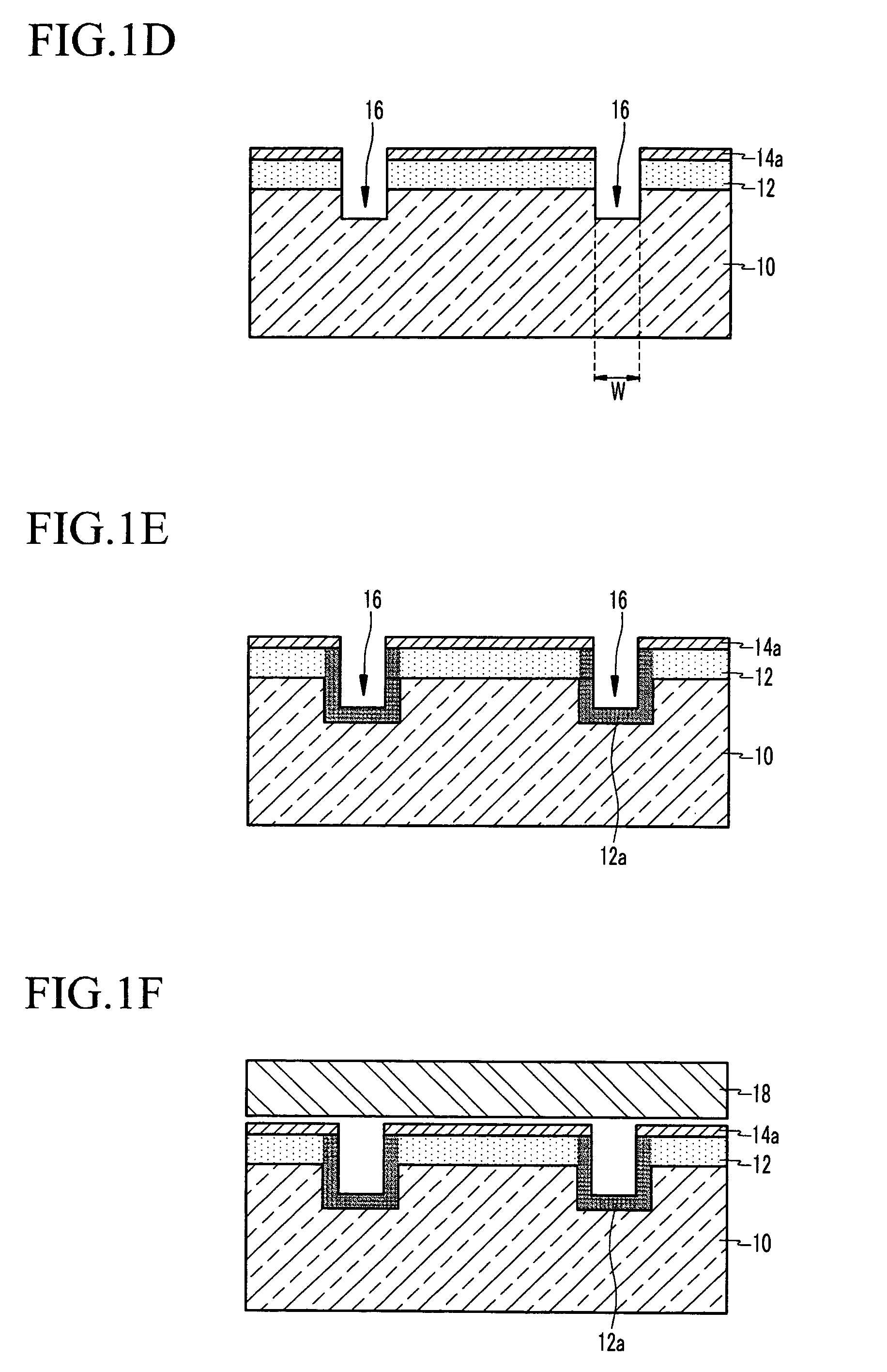Method of manufacturing solar cells with buried contacts with a laser
a solar cell and laser technology, applied in the field of solar cells, can solve the problems of low productivity, long process time, difficult management of solutions, etc., and achieve the effects of reducing failure rate and shading loss, improving resistance properties, and small line width
- Summary
- Abstract
- Description
- Claims
- Application Information
AI Technical Summary
Benefits of technology
Problems solved by technology
Method used
Image
Examples
Embodiment Construction
[0033]Hereinafter, a solar cell and a method of manufacturing the same according to an embodiment of the present invention will be described in detail with reference to the attached drawings such that the present invention can be easily put into practice by those skilled in the art.
[0034]FIGS. 1A thru 1J are cross-sectional views showing a method of manufacturing a solar cell according to an embodiment of the present invention.
[0035]First, as shown in FIG. 1A, a p-type semiconductor substrate 10 formed of silicon is prepared. However, the present invention is not limited thereto. That is, an n-type semiconductor substrate or a semiconductor substrate formed of various semiconductor materials except silicon may be used.
[0036]In order to improve the property of the solar cell, a preprocessing step may be performed. The preprocessing step is performed by etching the semiconductor substrate 10 using an alkali aqueous solution or a mixed acid solution, and removing impurities using a cle...
PUM
 Login to View More
Login to View More Abstract
Description
Claims
Application Information
 Login to View More
Login to View More - R&D
- Intellectual Property
- Life Sciences
- Materials
- Tech Scout
- Unparalleled Data Quality
- Higher Quality Content
- 60% Fewer Hallucinations
Browse by: Latest US Patents, China's latest patents, Technical Efficacy Thesaurus, Application Domain, Technology Topic, Popular Technical Reports.
© 2025 PatSnap. All rights reserved.Legal|Privacy policy|Modern Slavery Act Transparency Statement|Sitemap|About US| Contact US: help@patsnap.com



